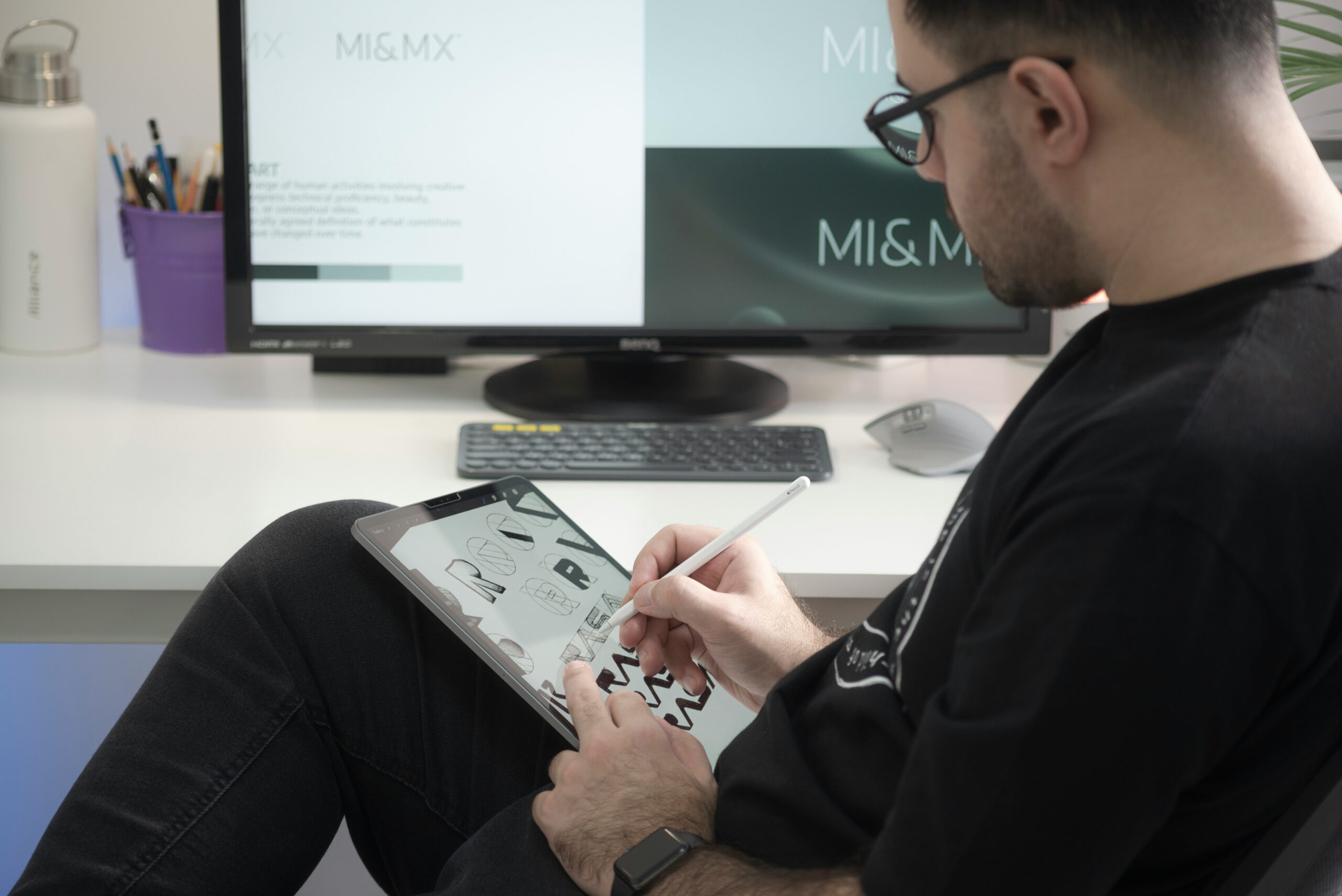Demystifying Design Files: A Guide for Screen Printing and Embroidery
Introduction
In the realm of apparel decoration, understanding the types of design files required for screen printing, heat transfers, custom embroidery and promotional items is crucial for achieving the desired results. If you’re a business owner venturing into custom merchandise or an established company with corporate and work apparel needs, making sense of the file formats will make the entire process smoother.
In this comprehensive guide, we will delve into the key design file formats for screen printing (.ai, .eps, and .pdf) and embroidery (.emb and .dst), providing clarity for those unfamiliar with what each file format is used for. For more helpful tips, check out our Comprehensive Guide to Collaborating with Professional Screen Printing, Embroidery, and Promotional Items Companies with our resources section.
Screen Printing Files: .ai, .eps, and .pdf
To ensure your Screen Printing design translates seamlessly onto your chosen garment, it’s crucial to use the right file formats.
- Adobe Illustrator (.ai)
- The .ai file format is a vector-based format that is widely accepted in the printing industry. Vectors use mathematical equations to ensure that your design remains crisp and clear, regardless of its size. This is particularly important for intricate or detailed designs.
- When preparing a design for screen printing, start with an .ai file. It allows for easy manipulation of elements, such as resizing or color adjustments, without compromising quality.
- Ensure that all fonts are outlined or converted to paths to avoid any font-related issues. Screen printers prefer working with outlined fonts as they eliminate the need for font installations on their end.
- Encapsulated PostScript (.eps)
- Similar to .ai files, .eps files are vector-based and maintain the scalability of the design. They are widely recognized in the printing industry and are compatible with various design softwares.
- Using .eps files for screen printing is advantageous when sharing designs with multiple vendors or partners, as it is a more universally compatible format.
- Like .ai files, all fonts should be outlined or converted to paths in .eps files to ensure consistency and avoid font-related complications during the printing process.
- Portable Document Format (.pdf)
- PDF files are versatile and widely used for various purposes, including screen printing. They can embed both raster and vector elements, making them suitable for designs that include images alongside vector graphics.
- When saving a PDF for screen printing, it’s essential to ensure that the file is in a high-resolution format. A resolution of 300 dots per inch (DPI) is the industry standard for achieving sharp and detailed prints.
- Confirm that the PDF is in the CMYK color mode, especially if your design involves full-color printing. This ensures accurate color representation during the printing process.
- Checking the DPI of images in a PDF and whether the file is set to CMYK can be done in Adobe Acrobat. To check the DPI of objects in the file, you can go to “Print Production” under “Tools.” To check whether the file is in CMYK, you can go to “Show” under “Overprint Preview.”
Embroidery Files: .emb and .dst
Unlike screen printing, which relies on digital files for printing, embroidery requires files that dictate the path and sequence of stitches. Here are the two file formats used for embroidery
- Wilcom Embroidery (.emb)
- The .emb file format is specific to Wilcom embroidery software, one of the leading programs in the embroidery industry. This format retains information about stitch types, colors, and sequencing.
- When working with a professional embroidery service, providing an .emb file ensures that the intricate details of your design are accurately translated into stitches. However, keep in mind that not all embroidery machines and software may support this format.
- Tajima Embroidery (.dst)
- The .dst (Data Stitch Tajima) file format is a widely accepted standard in the embroidery industry. It contains information about stitch types, color changes, and other crucial details for embroidery machines.
- Most embroidery machines, regardless of the brand, can read .dst files. This makes it a preferred format when working with different embroidery service providers or machines.
- Ensure that your .dst file is clean and free from unnecessary elements. Simplify the design, and if possible, convert text to outlines or paths to avoid font compatibility issues.
Tips for a Smooth Process
- Communication with Service Providers
- Before sending your files, communicate with your chosen screen printing or embroidery service provider. Different companies may have specific preferences or requirements, and understanding these in advance can prevent unnecessary delays or complications.
- Color Accuracy
- Pay careful attention to color accuracy, especially in screen printing where precise color matching is crucial. Supplying your service provider with the Pantone (PMS) color codes for your design to ensure that the final product aligns with your vision.
- Test Prints and Samples
- Consider requesting test prints or embroidery samples before placing a large order. This allows you to assess the quality and make any necessary adjustments before committing to a full production run.
- File Organization
- Organize your files logically, especially if your design involves multiple elements or colors. Clearly label layers, and if applicable, provide a separate file for each color in your design. This makes it easier for the printing or embroidery team to understand your vision and execute it accurately.
Conclusion
Navigating the world of local, screen printing and embroidery companies may initially seem daunting, but armed with knowledge about the right design file formats, you can confidently bring your creative visions to life. By understanding the significance of .ai, .eps, and .pdf files for screen printing, as well as .emb and .dst files for embroidery, you empower yourself to communicate effectively with service providers, ensuring a smooth and successful customization process. So, go ahead, unleash your creativity, and watch as your designs transform into wearable works of art.


